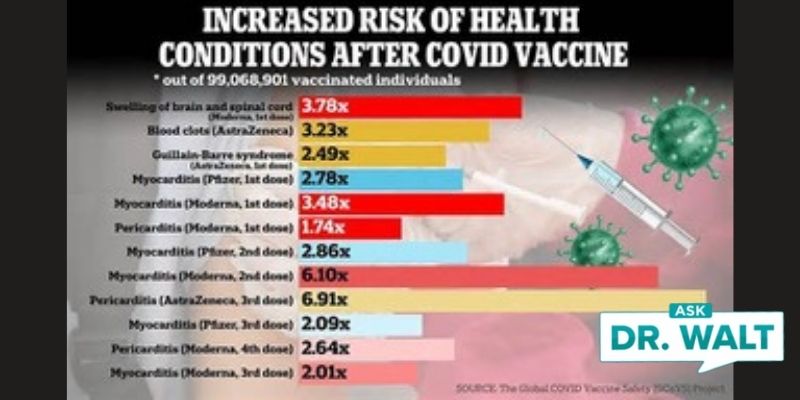The Grass Is Not Always Greener: A Look at National Health Care Systems Around the World – Part 3 – Great Britain
Spare the Rod? Is Spanking a Child Harmful or Helpful? – Part 3 – Does physical punishment establish the moral righteousness of hitting other persons?
September 30, 2009Larimore Family Newsletter – October 2009 Edition
October 2, 2009The Grass Is Not Always Greener: A Look at National Health Care Systems Around the World – Part 3 – Great Britain
In the midst of our national debate about healthcare reform, people on both sides of the debate seem to pick and choose among the facts and myths about the nationalized healthcare available in a number of other countries. The fact is that every nationalized health care system in the world is battling issues of rapidly rising costs and decreasing access to care. But, these systems also have some very attractive benefits. So, let’s take a look at the pro’s and con’s of the system in Great Britain.
Michael Tanner, the director of health and welfare studies at the Cato Institute, is the coauthor of Healthy Competition: What’s Holding Back Health Care and How to Free It and the author of this series:
Great Britain represents all that is good and bad with centralized, single-payer health care systems. Health care spending is fairly low (7.5% of GDP) and very equitable. Long wait lists for treatment, however are endemic and rationing pervades the system. Patients have little choice of provider and little access to specialists.
Percent Insured. ~100%
Funding. Great Britain has a single payer system funded by general revenues. With any centralized system, avoiding deficits is difficult. In 2006, Great Britain had a £700 million deficit despite the fact that health care spending increased by £43 billion over five years.
Private Insurance. 10% of Britons have private health insurance. Private health insurance replicates the coverage provided by the NHS, but gives patients access to higher quality care, and reduced waiting times.
Physician Compensation. Unlike in the case of other single payer systems such as Norway, most physicians and nurses are mostly government employees. In 2004, the NHS negotiated lower salaries for doctors in exchange for reduced work hours. Few physicians are available at night or on weekends. Because of low compensation, there is a significant shortage of specialists.
Physician Choice. Patients have very little physician choice. However, under the experimental London Patient Choice Project, patients waiting more than six months for treatment will be offered a choice of four different treatment providers.
Copayment/Deductibles. There are no deductibles and almost no copayments except for small copayments for prescription drugs, as well as for optical and dental care.
Waiting Times. Waiting lists are a huge problem in Great Britain. Some examples: 750,000 are on waiting lists for hospital admission; 40% of cancer patients are never able to see an oncologist; there is explicit rationing for services such as kidney dialysis, open heart surgery and care for the terminally ill. Further, minimum waiting times have been instituted to reduce costs. “A top-flight hospital like Suffolk Est PCT was ordered to impose a minimum waiting time of at least 122 days before patients could be treated or the hospital would lose a portion of its funding.”
Benefits Covered. The NHS system offers comprehensive coverage. Because of rationing, care might not be as easy to get as advertised. Terminally ill patients may be denied treatment. David Cameron has proposed that the NHS refuse treatment to smokers or the obese (see Tanner’s post of 7 Sept 2007).
In addition, there has been much discussion about cancer treatment, not only in Great Britain, but also in Europe — at least as compared to the US. Here’s some information about that topic from the National Center for Policy Analysis:
Overall Cancer Survival Rates. According to a survey of cancer survival rates in Europe and the United States, published recently in Lancet Oncology:
-
- American women have a 63 percent chance of living at least five years after a cancer diagnosis, compared to 56 percent for European women.
- American men have a five-year survival rate of 66 percent — compared to only 47 percent for European men.
- Among European countries, only Sweden has an overall survival rate for men of more than 60 percent.
- For women, only three European countries (Sweden, Belgium and Switzerland) have an overall survival rate of more than 60 percent.
These figures reflect the care available to all Americans, not just those with private health coverage. Great Britain, known for its 50-year-old government-run, universal health care system, fares worse than the European average: British men have a five-year survival rate of only 45 percent; women, only 53 percent.
Survival Rates for Specific Cancers. U.S. survival rates are higher than the average in Europe for 13 of 16 types of cancer reported in the Lancet Oncology survey, confirming the results of previous studies. For example, another study from the American Cancer Society shows:
-
- According to one study, of cancers that affect primarily men, the survival rate among Americans for bladder cancer is 15 percentage points higher than the European average; for prostate cancer, it is 28 percentage points higher.
- Of cancers that affect women only, the survival rate among Americans for uterine cancer is about 5 percentage points higher than the European average; for breast cancer, it is 14 percentage points higher.
- The United States has survival rates of 90 percent or higher for five cancers (skin melanoma, breast, prostate, thyroid and testicular), but there is only one cancer for which the European survival rate reaches 90 percent (testicular).
Furthermore, the Lancet Oncology study found that lung cancer patients in the United States have the best chance of surviving five years — about 16 percent — whereas patients in Great Britain have only an 8 percent chance, which is lower than the European average of 11 percent.
Early Diagnosis. It is often claimed that people have better access to preventive screenings in universal health care systems. But despite the large number of uninsured, cancer patients in the United States are most likely to be screened regularly, and once diagnosed, have the fastest access to treatment.
For example, a Commonwealth Fund report showed that women in the United States were more likely to get a PAP test for cervical cancer every two years than women in Australia, Canada, New Zealand and Great Britain, where health insurance is guaranteed by the government.
In the United States, 85 percent of women aged 25 to 64 years have regular PAP smears, compared with 58 percent in Great Britain.
The same is true for mammograms; in the United States, 84 percent of women aged 50 to 64 years get them regularly — a higher percentage than in Australia, Canada or New Zealand, and far higher than the 63 percent of British women.
Access to Treatments and Drugs. Early diagnosis is important, but survival also depends on getting effective treatment quickly. However, long waits for treatment are “common devices used to restrict access to care in countries with universal health insurance,” according to a report in Health Affairs.
The British National Health Service has set a target for reducing waits to no more than 18 weeks between the time their general practitioner refers them to a specialist and they actually begin treatment. Yet, a study by the Royal College of Radiologists showed that such long waits are typical, and 13 percent of patients who need radiation never get it due to shortages of equipment and staff.
Another reason for the higher cancer survival rates in the United States is that Americans can get new, effective drugs long before they are available in most other countries. A report in the Annals of Oncology by two Swedish scientists found:
-
- Cancer patients have the most access to 67 new drugs in France, the United States, Switzerland and Austria.
- Erlotinib, a new lung cancer therapy, was 10 times more likely to be prescribed for a patient in the United States than in Europe.
One of the report’s authors, Nils Wilking, from the Karolinska Institute in Stockholm, explained that nearly half the improvement in survival rates in the United States in the 1990s was due to “the introduction of new oncology drugs,” and he urged other countries to make new drugs available faster.
Conclusion. International comparisons establish that the most important factors in cancer survival are early diagnosis, time to treatment and access to the most effective drugs. Some uninsured cancer patients in the United States encounter problems with timely treatment and access, but a far larger proportion of cancer patients in Europe face these troubles. No country on the globe does as good a job overall as the United States. Thus, the U.S. government should focus on ensuring that all cancer patients receive timely care, rather than radically overhauling the current system.
Here are links to the entire series: The Grass Is Not Always Greener: A Look at National Health Care Systems Around the World






0 Comments
Whilst seemingly a reasonable summary, some aspects are missing. Early diagnosis may lead to too aggressive and counter-productive treatments (there’s been a recent research report on just that); and this earlier diagnosis itself may distort survival times.
You rightly say there’s much to learn from each system, to the overall goal of enhancing everyone’s fitness survival.
However, the bottom line that is ignored above, and often in these comparisons (perhaps because it contradicts the wrongly implied superiority of any one system) is the average life spans in each country – to my mind the bottom line of comparison. Here the USA does not come out too well; most the the Western EU comes out better – for less % GDP expenditure. This is backed up by international comparisons of health systems.
Remember, more medical intervention does not equal better health – recall that when doctors went on strike, death rates fell.
Great post, i think this is very informative post i had got when searching.